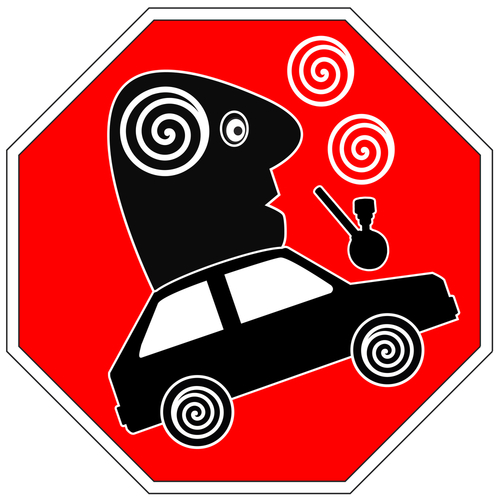When is someone too stoned to drive? The question is trickier than you'd think for courts to answer

Late one February night in 2013, Massachusetts state Trooper Eric French pulled over a blue SUV with its rear lights out. When he approached the car, he saw smoke and smelled pot. The driver, Thomas Gerhardt, could count backward from 75 to 62 and recite the alphabet from D to Q. But he couldn’t stand on one leg or walk nine steps and turn—standard measures on a field sobriety test. The trooper determined that Gerhardt was impaired, and he was arrested and charged with driving under the influence of marijuana.
Was Gerhardt even high? And if he was, was he too high to drive safely?
His lawyer argued in January before the Massachusetts Supreme Judicial Court that French proved neither that night.
Massachusetts is one of eight states, plus the District of Columbia, where recreational marijuana use is now legal. Twenty more states have legalized medical marijuana. But science and the law have not kept pace with this rapid political change.
We take for granted that not being able to walk a straight line or stand on one leg means you’re drunk, and that being drunk means it’s unacceptably dangerous to drive. But there is no clear scientific consensus when it comes to smoking pot and driving. And few of the tools police officers have long relied on to determine whether a driver is too drunk to drive, such as the Breathalyzer, exist for marijuana.
Cases like Gerhardt’s are on the front line of a new effort in courtrooms, labs and government agencies around the country to pin down how high is too high to drive—and how to reliably know when someone is that impaired.
Most (but not all) studies find that using pot impairs one’s ability to drive. However, overall, the impairment appears to be modest—akin to driving with a blood-alcohol level between 0.01 and 0.05, which is legal in all states. (The much greater risk is in combining pot with alcohol.)
The increased crash risk with pot alone “is so small you can compare it to driving in darkness compared to driving in daylight,” says Rune Elvik, a senior research officer at the Institute of Transport Economics in Oslo, Norway, who conducted several major meta-analyses evaluating the risks of drugged driving. “Nobody would consider banning people from driving in the dark. If you tried to impose some kind of consistency standard, then there is no strong case, really, for banning it.”
When it comes to alcohol, science and the courts have long established a direct line between number of drinks, blood-alcohol level and crash risk. As one goes up, so do the others. Not so for pot. Scientists can’t say with confidence how much marijuana, in what concentration, used in what period of time, will reliably make someone “high.” (This is especially difficult to gauge because most of the existing studies used pot provided by the National Institute on Drug Abuse, which tends to be a lot less potent than what smokers can buy on the street or in shops.)
Blood levels of THC—the chemical component of pot that makes you high—spike quickly after smoking and decline rapidly in the hours afterward, during the window when a smoker would feel most high. What’s more, regular smokers could have THC in their blood for days or weeks after smoking, when they are clearly no longer high.
Still, laws in 18 states tie drugged driving charges to whether drivers have THC or related compounds in their blood. Some states prohibit driving with any amount, and some specify a threshold modeled after the 0.08 limit states use for blood alcohol. But the lag time between being pulled over and being transported to a hospital for a blood draw—on average, more than two hours—can lead to false negatives, while the tolerance developed by regular users (and the tendency for THC to stick around in their bloodstreams) can lead to false positives. This is why, researchers say, blood THC laws make little sense.
“If you’re stopping someone who just tried it or uses it occasionally, a little bit of THC goes a long way—they’re very impaired,” says political scientist Nicholas Lovrich, a professor emeritus at Washington State University. “But people are demonstrably able to drive at high levels of THC if they’re a frequent user.”
The more sensible strategy appears to be prohibiting driving while high, and 31 states take this approach. But proving that a driver is high turns out to be tricky terrain, too.
Roadside testing
One of the issues Gerhardt raises in his case is whether police officers with standard training are qualified to make a judgment that a driver is high. Courts in a few states—including Montana, New Jersey and Vermont—have ruled that they are not. “Unlike alcohol intoxication,” the New Jersey high court ruled in 2006, “no … general awareness exists as yet with regard to the signs and symptoms of the condition described as being ‘high’ on marijuana.”
Research shows that failing a standard field sobriety test correlates closely with having a blood-alcohol level above the legal limit—and officers have the Breathalyzer to confirm their findings. But “the gap between assessment, cannabis use and driving is really not completely closed,” says Thomas Marcotte, co-director of the Center for Medicinal Cannabis Research at the University of California at San Diego.
Frequent pot users may not be able to stand on one leg, for example—even when they’re not stoned—whether they’re safe to drive or not. Marcotte and his colleagues are working on validating a new field sobriety test for pot use. Their iPad-based test measures skills such as tracking an object on the screen and accurately estimating time. Although police may not yet have a validated tool, apps have begun to appear for those who want to gauge their own ability to drive after smoking by analyzing reaction time, hand-eye coordination and the like.
EvaluatiON OPINIONS
Some police departments use drug recognition experts—specially trained officers dispatched to evaluate suspected drugged drivers. These officers, commonly referred to as DREs, use an hourlong, 12-step process that includes taking the suspect’s blood pressure and pulse and conducting eye exams and balance tests. They use this information to generate an opinion about whether the driver is intoxicated—and, if so, by what. Preliminary research seems to indicate their opinions are of mixed quality, and not all judges allow DREs to testify to their findings.
“They’re not EMTs. They’re not medically trained,” says Lovrich, the Washington State professor who, in a recent study of five years of DRE data in Washington and New Mexico, found a false-positive rate for pot intoxication ranging from 38 percent to 68 percent. “Everyone in the DRE business knows it’s really hard to do this.”
The gold standard would be a Breathalyzer-like device that can objectively measure whether someone has recently smoked, as well as how much. Lovrich is working on developing such a tool, using the same type of technology that security screeners use at airports to check for explosives. He says it will be at least two years before the technology is perfected, miniaturized and engineered to be durable enough to toss in the back seat of a squad car.
In the meantime, people like Gerhardt will fight it out in state courts. A ruling on his case is expected in the next few months.
Published in partnership with the Marshall Project, a nonprofit news organization covering the U.S. criminal justice system. Beth Schwartzapfel is a staff writer for the Marshall Project.
This article originally appeared in the April 2017 issue of the ABA Journal with this headline: "Too Stoned to Drive? The question is trickier than you’d think for police and the courts to answer."



